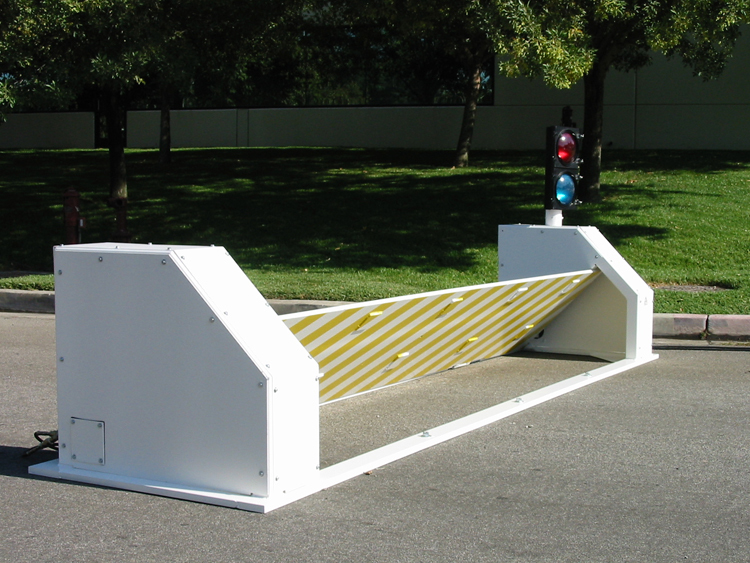Our Wedge Barriers PDFs
Table of ContentsSome Known Incorrect Statements About Wedge Barriers Getting The Wedge Barriers To Work

Some Known Factual Statements About Wedge Barriers
The staying pressure used to
the cam webcam deploy the wedge plate 16 may might provided by an electromechanical actuator 84 or other actuator. The spring setting up 54 and the actuator 84(e. Wedge Barriers. g., electromechanical actuator)may run together to translate the webcam and raise the wedge plate 16.
As discussed over, the spring assembly 54 puts in a continuous pressure on the web cam, while the electromechanical actuator may be regulated to apply a variable force on the cam, thus allowing the lifting and lowering( i. e., deploying and withdrawing )of the wedge plate 16. In certain embodiments, the consistent pressure used by the spring setting up 54 might be flexible. g., electromechanical actuator) is impaired. As will certainly be valued, the spring assembly 54 may be covered and safeguarded from debris or other components by a cover plate(e. g., cover plate 68 received FIG. 4) that may be significantly flush with the raised surface area 38 of the structure 14. As discussed over, in the released setting, the wedge plate 16 offers to obstruct gain access to or traveling past the obstacle 10. The obstacle 10(e. g., the wedge plate 16 )might obstruct pedestrians or lorries from accessing a residential property or path. As reviewed over, the barrier 10 is connected to the anchor 30 safeguarded within the structure 14,

front brackets important link 71. Therefore, the link settings up 72 might pivot and revolve to allow the collapse and extension of the affiliation settings up 72 throughout retraction and deployment of the bather 10. The linkage assemblies 72 cause motion of the wedge plate 16 to be limited. If a car is traveling towards the deployed wedge plate 16(e. For example, in one situation, the safety legs 86 may be extended duringmaintenance of the barrier 10. When the safety legs 86 are released, the safety and security legs 86 support the weight of the wedge plate 16 against the surface 12. Consequently, the training device 50 might be shut down, serviced, eliminated, changed, and so forth. FIG. 5 is partial perspective view of an embodiment of the surface-mounted wedge-style barrier 10, highlighting the webcam 80 and the webcam surfaces 82 of the lifting device 50. Specifically, two camera surface areas 82, which are described as reduced camera surfaces 83, are positioned below the cam 80. The reduced web cam surface areas 83 might be taken care of to the surface 12 (e. For instance, the reduced camera surfaces 83 and the mounting plate 85 might form a single item that is protected to the anchor 30 by screws or other mechanical bolts. In addition, two cam surface areas 82, which are referred to as top camera surfaces 87, find more are placed over the cam 80 and coupled to (e. In various other embodiments, intervening layers or plates might be positioned in between the surface area 12 and the lower web cam surfaces 83 and/or the wedge plate 16 and the top webcam surface areas 87 As stated above, the web cam
80 equates along the cam surface areas 82 when the wedge plate 16 is lifted from the retracted placement to the deployed position. Furthermore, as mentioned over, the springtime assembly 54 (see FIG. 3 )might offer a pressure acting on the web cam 80 in the direction 102 using spring pole 58, which might minimize the pressure the electromechanical actuator 84 is needed to relate to the webcam 80 in order to activate and lift the wedge plate 16. 1 )to the deployed placement(see FIG. 4). As shown, the webcam 80 consists of track wheels 104(e. g., rollers), which get in touch with and convert along the webcam surface areas 82 during operation.